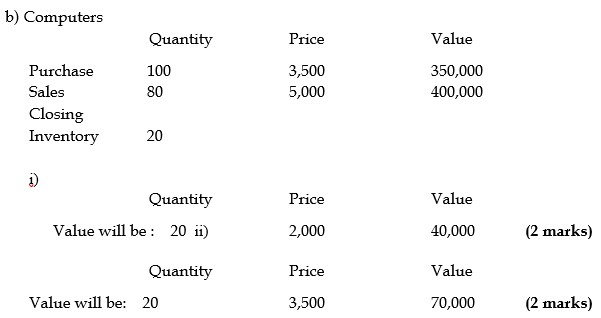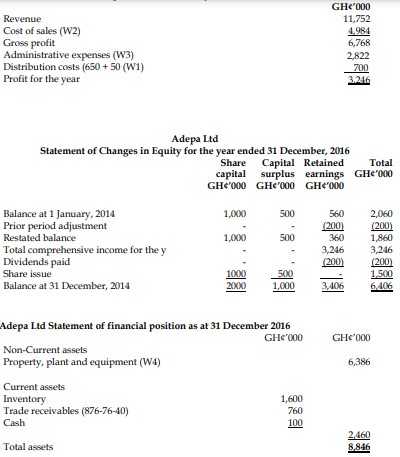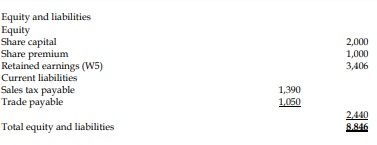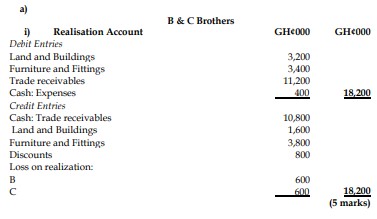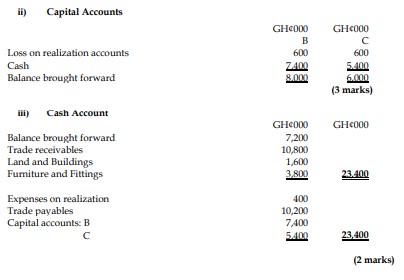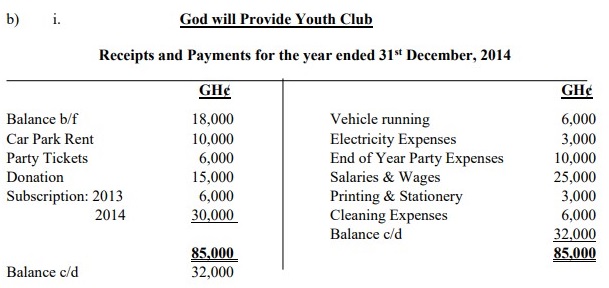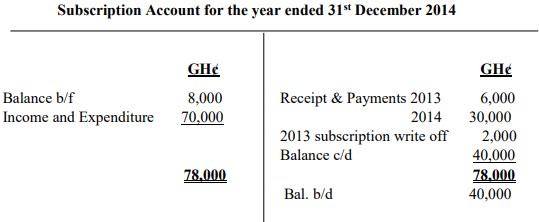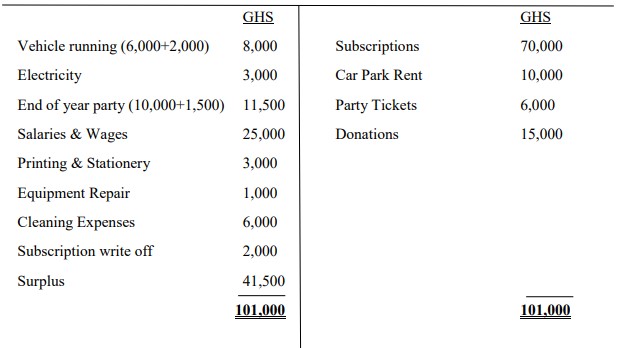- 20 Marks
Question
The conceptual framework for financial reporting sets out the concepts that underlie the preparation and presentation of financial statements for users. The objectives of financial statements are to provide information about the financial position, performance, and changes in the financial position of an entity that is useful to a wide range of users in making economic decisions. Users of accounting information are classified into internal and external users.
According to the Framework of IAS/IFRS, the underlying assumptions for the preparation of financial statements are accrual basis and going concern basis.
Required:
a) State TWO (2) internal users and TWO (2) external users of accounting information and their information needs.
(4 marks)
b) Identify and explain FOUR (4) elements of financial statements.
(8 marks)
c) Identify FOUR (4) benefits that financial statements provide to its users.
(4 marks)
d) Explain what is meant by accrual basis of accounting. Illustrate your answer with a suitable example.
(2 marks)
e) Explain what is meant by going concern basis.
(2 marks)
Answer
a) Internal Users of Accounting Information
- Management: Needs accounting information to ensure that the different functional areas of the organization are working together as a corporate body to achieve overall objectives rather than their individual objectives.
- Employees: Interested in job security and fair remuneration, which are linked to the company’s financial health and profit generation.
(2 marks)
External Users of Accounting Information
- Shareholders: Interested in how their funds are being used (stewardship) and making decisions on buying or selling shares (investment).
- Bankers: Assess the liquidity of the company to determine its ability to repay loans.
(2 marks)
b) Elements of Financial Statements
- Asset: A resource controlled by the entity as a result of past events from which future economic benefits are expected to flow to the entity.
- Liability: A present obligation of the entity arising from past events, the settlement of which is expected to result in an outflow of resources embodying economic benefits.
- Equity: The residual interest in the assets of the entity after deducting all its liabilities.
- Income: Increases in economic benefits during the accounting period in the form of inflows or enhancements of assets or decreases of liabilities that result in increases in equity, other than those relating to contributions from equity participants.
(8 marks)
c) Benefits of Financial Statements
- Provide information for decision-making regarding the value of shareholders’ investments and income derived from shareholding.
- Allow employees to assess the financial health of the company for job security, pay increases, and promotions.
- Help trade payables and banks assess the company’s ability to meet financial obligations.
- Provide information to government agencies for statutory obligations like tax payments.
(4 marks)
d) Accrual Basis of Accounting
Financial statements are prepared on the basis of recognizing income and expenses when they are earned or incurred, not necessarily when cash is received or paid. For example, sales are recorded when goods are delivered, not when payment is received.
(2 marks)
e) Going Concern Basis
Financial statements should be prepared on the basis that the entity will continue in operation for the foreseeable future. For example, inventory is valued at the lower of cost or net realizable value, assuming the business will continue operating.
(2 marks)
- Tags: Accrual Basis, External Users, Financial Reporting, Going Concern, Internal Users
- Level: Level 1
- Topic: Accruals and prepayments, The IASB’s Conceptual Framework
- Series: MAY 2019
- Uploader: Theophilus

